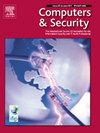SLIFER: Investigating performance and robustness of malware detection pipelines
IF 4.8
2区 计算机科学
Q1 COMPUTER SCIENCE, INFORMATION SYSTEMS
引用次数: 0
Abstract
As a result of decades of research, Windows malware detection is approached through a plethora of techniques. However, there is an ongoing mismatch between academia – which pursues an optimal performances in terms of detection rate and low false alarms – and the requirements of real-world scenarios. In particular, academia focuses on combining static and dynamic analysis within a single or ensemble of models, falling into several pitfalls like (i) firing dynamic analysis without considering the computational burden it requires; (ii) discarding impossible-to-analyze samples; and (iii) analyzing robustness against adversarial attacks without considering that malware detectors are complemented with more non-machine-learning components. Thus, in this paper we bridge these gaps, by investigating the properties of malware detectors built with multiple and different types of analysis. To do so, we develop SLIFER, a Windows malware detection pipeline sequentially leveraging both static and dynamic analysis, interrupting computations as soon as one module triggers an alarm, requiring dynamic analysis only when needed. Contrary to the state of the art, we investigate how to deal with samples that impede analyzes, showing how much they impact performances, concluding that it is better to flag them as legitimate to not drastically increase false alarms. Lastly, we perform a robustness evaluation of SLIFER. Counter-intuitively, the injection of new content is either blocked more by signatures than dynamic analysis, due to byte artifacts created by the attack, or it is able to avoid detection from signatures, as they rely on constraints on file size disrupted by attacks. As far as we know, we are the first to investigate the properties of sequential malware detectors, shedding light on their behavior in real production environment.
求助全文
约1分钟内获得全文
求助全文
来源期刊

Computers & Security
工程技术-计算机:信息系统
CiteScore
12.40
自引率
7.10%
发文量
365
审稿时长
10.7 months
期刊介绍:
Computers & Security is the most respected technical journal in the IT security field. With its high-profile editorial board and informative regular features and columns, the journal is essential reading for IT security professionals around the world.
Computers & Security provides you with a unique blend of leading edge research and sound practical management advice. It is aimed at the professional involved with computer security, audit, control and data integrity in all sectors - industry, commerce and academia. Recognized worldwide as THE primary source of reference for applied research and technical expertise it is your first step to fully secure systems.
 求助内容:
求助内容: 应助结果提醒方式:
应助结果提醒方式:


